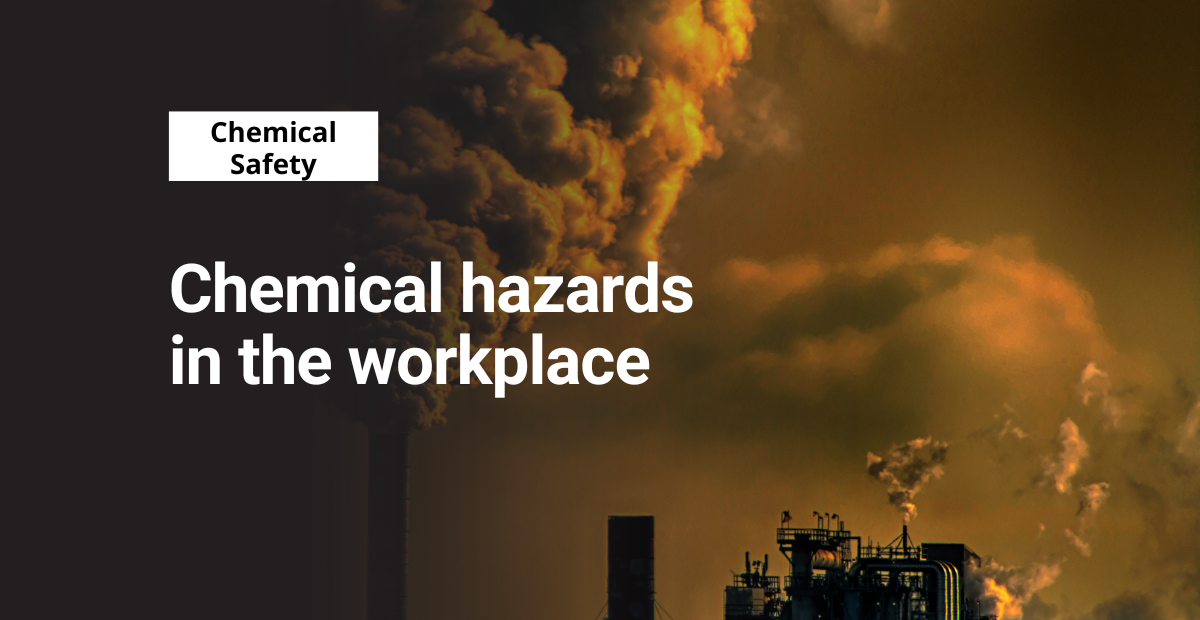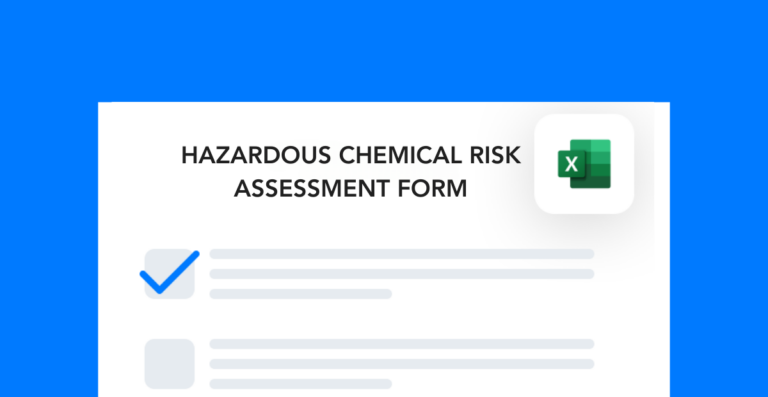We all use chemicals in our daily lives. Even though using chemicals seems normal to us, some common chemicals could cause severe effects if an incident occurred.
Now, consider how many more chemicals companies use in the manufacturing industry every day. How many of these chemicals could be potentially harmful to our health? Also, where can we find out which chemicals are harmful to us, why they’re harmful, and how to protect ourselves? First, define what a chemical hazard is and understand the types of risks chemicals pose to us.
What is a chemical hazard?
NIOSH defines chemical hazards as any substances that can pose a risk to human health and safety. These risks can be due to chemical properties, which can create hazardous situations. Some chemical exposure can be highly toxic or carcinogenic to humans, causing short- and long-term health effects.
Other chemicals could be highly reactive, oxidize quickly, or explode under certain conditions, creating physical hazards. Many hazards are situation-specific. Examples include the effects from skin exposure to skin irritants or volatized chemical inhalation.
The most common ways of chemical exposure are inhalation, skin contact, and ingestion. Determining the type of exposure and potential exposure is crucial.
This information will help you understand which precautions to take and why. Some chemical substances may not require any additional precautions for their use. On the other hand, other chemicals may require intensive training and other protections to decrease risk. Some hazardous chemicals have rules restricting their use to help control workplace exposure.
Common hazardous chemicals in the workplace
There are thousands of potentially hazardous chemicals in the industrial workplace but not all of them fall under safety regulations. In fact, several substances are commonly found that pose significant risk.
These chemicals have well-documented health effects, and federal agencies regulate their exposure times and concentrations. Some of these more common chemicals include:
- Asbestos
- Benzene
- Lead
- Chromium (VI)
- Formaldehyde
- Vinyl chloride
- Methylene chloride
You can find regulations on chemicals containing these substances, and on general chemical use, in 29 CFR 1910 Subpart Z. OSHA has established permissible exposure limits (PELs) for many hazardous chemicals, but not all. Other agencies have established limits as well.
Regulations on chemical exposure limits
Most of OSHA’s PELs are 8-hour time-weighted averages for airborne chemical concentrations, meaning that the air’s chemical level is measured over an 8-hour period to ensure that the total dose of chemical exposure does not exceed the set limit at any point.
OSHA has only set about 500 PELs but has added other limits to its Subpart Z tables to provide additional information and support. These limits include:
- Cal OSHA’s PELs
- NIOSH’s recommended exposure limits (RELs)
- ACGIH’s threshold limit values (TLV)
- ACGIH’s Biological exposure indices (BEI)
Learning about the chemicals hazards in your workplace
Finding detailed technical information about chemical hazards is not as difficult as you might think. Chemical manufacturers must create safety data sheets (SDSs) for all of the chemicals they produce.
Employers who use chemicals must ensure that SDSs are readily accessible to employees, and employees must be trained on how to handle the chemicals they may be exposed to. If you are searching for information on a chemical at home, many large chemical distributors have SDS databases that can be used to search for the chemical.
Companies most often use software to manage their chemical compliance management processes which likely include data on chemicals used at work.
However, suppose the chemical distributor or manufacturer is a smaller company. In that case, there might not be such a database – meaning that as a last resort, you might have to contact the manufacturer directly.
Will my employer train me on the chemicals used?
OSHA requires employers to provide training on the chemical hazards, and personal protective equipment (PPE) that you need for safety purposes.
If you believe that there are insufficient safety precautions for the chemical hazards in your workplace, ask the safety team for clarification or support. If you work in a laboratory that uses chemicals, an excellent place to start would be your workplace’s Chemical Hygiene Plan (CHP).
How can using PPE help protect me?
Different types of PPE protect from different hazards. Respirators can help protect your lungs from airborne chemicals (be sure you are using the appropriate cartridges or filters). In contrast, gloves and safety glasses can help protect skin and eyes from chemical splashes.
You need to understand the type and the limits of the PPE to reduce your exposure to the chemical’s hazards. Remember that using PPE lowers the risk of using a hazardous chemical if you use the PPE properly. It does not eliminate risk and is the least effective measure to protect against hazards.
What should I do if I was exposed?
Exposure to chemical hazards can still occur even when using appropriate safety measures, such as local exhaust ventilation or properly using PPE. In this instance, you need to know the names of the chemicals, the route of exposure, and where to find the chemical safety data sheets. You can find information about symptoms and effects in section four of an SDS.
Other resources in these types of situations are searchable medical and emergency management procedures and toxicology profiles. For detailed information from multiple government agencies explaining the listed chemicals’ potential hazards and the actions to be taken in emergencies.




